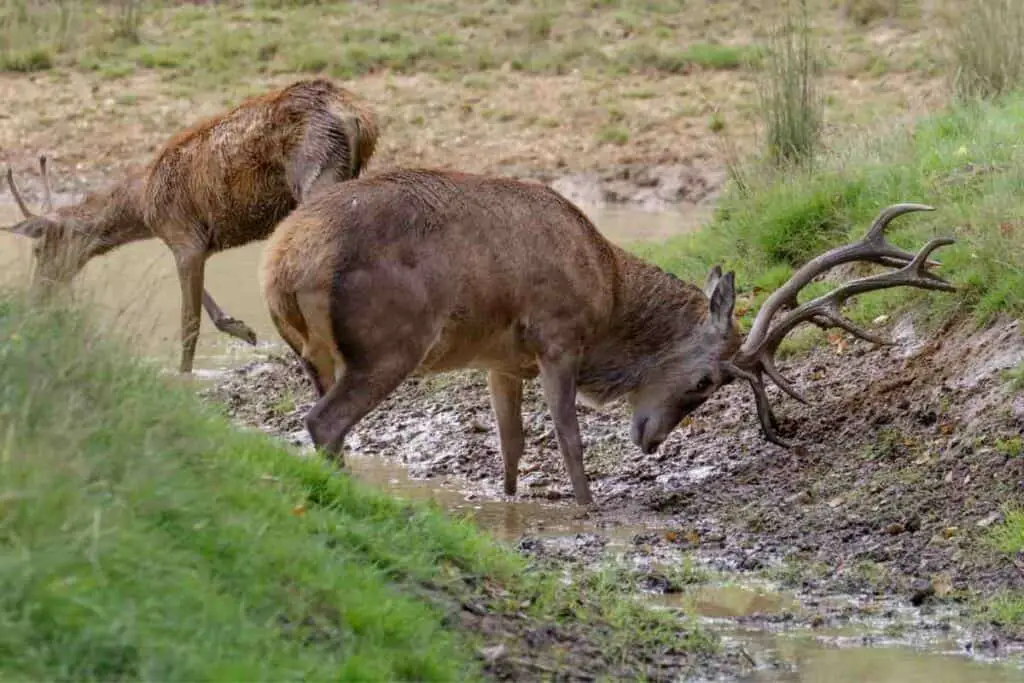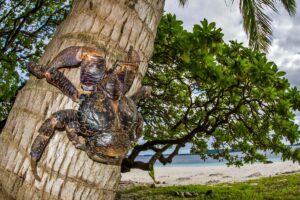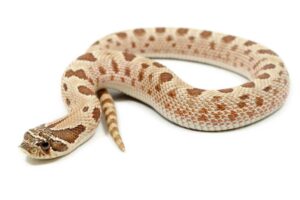Deer scrapes are a way for deer, particularly whitetails, to mark their territory with scent. Deer communicate with each other in various ways, but mostly through their scents, and when they leave behind scrapes, it leaves both markings and their scent for the next deer to notice.
Bucks constantly mark their territory with scent throughout the year, and making scrapes is how they do it.
That being said, most of the scraping done by whitetails is done from October to December because this is when their testosterone levels are at their peak.

Table of Contents
How Deer Scrapes Are Made
The scraping behavior is executed by deer mostly by working an overhanging licking branch.
Whitetail bucks usually find an attractive branch hanging at the edge of a field, along a roadway, or even in a random area he finds himself walking through. The process is started when the deer rubs his forehead, preorbital, and nasal glands on the branch itself.
Sometimes, he’ll chew and lick on the branch as well. When he’s done, a buck will usually brush nearby leaves and debris on the ground out of the way then urinate on that particular piece of ground.
More often than not, the entire process takes but a few minutes, so people are often surprised to learn that the bucks leave an enormous amount of scent behind once they’re done.
Scraping and rubbing allow bucks to let other deer know they’ve been there because their particular scent will be dispensed throughout the area.
A lot of hunters debate whether scraping is just a way for bucks to attract does, but the truth is that some does will also scrape and scratch up a branch.
That being said, does will not usually leave their urine on the ground below the branches. It seems that most of the time, only bucks do that.
What is the Purpose of Scraping?
Most hunters do believe that scraping is a “buck” thing, since does seem to do it so infrequently. They will claim that bucks scrape far more than does do and that does rarely urinate on the ground beneath the licking branches afterwards.
Most hunters also believe that bucks scrape because it is a conditioned and very satisfying response for them.
It isn’t that the dissemination of their scent isn’t an important reason for their scraping, because it is. But the truth is that most bucks love the feeling of the branch massaging his forehead, preorbital, and nasal glands.

In some ways, they may not even know they are spreading their scent.
In fact, many deer experts and hunters believe that the act of scraping for deer is very complex and may serve many other purposes besides attracting does and spreading their scent to other deer.
While we don’t really fully understand all of the reasons behind scraping, one thing is certain: it is a powerful behavior that all bucks seem to participate in, and they participate in it 365 days a year, most powerfully in the last three months of the year.
What Factors Affect Scraping?
Scraping bucks are believed to be participating in this activity for numerous reasons, not the least of which is the fact that it’s very stimulating for them.
But there are still factors that affect scraping overall and how frequently the act is performed, and one of those factors is age.
If a certain area has a lot of yearlings, or bucks that are less than two years of age, you simply won’t find as much scraping behavior as you would in bucks two years of age or older.
In older bucks, there are far more signs of scraping than there are when the bucks in the area are much younger.
And if you’re wondering how common it is for mature bucks to scrape, there is evidence (based on various studies and research projects) that prove bucks will make 6-12 scrapes every hour that they are on their feet.
They do this during the weeks leading up to their peak breeding periods, which means that during the October-to-December time period, they may scrape even more often.
Of course, at other times of the year they are scraping much less, but they certainly scrape a lot when they’re close to reaching their peak breeding periods.
Conclusion
Deer scrapes can be found almost anywhere and are made mostly by bucks past the age of two.
The last three months of the year is when you’ll see bucks scraping the most, and you can even find does scraping in some instances, although they rarely leave urine in the area below the licking branches like bucks do.
Scraping is something that deer do 365 days a year, although when they’re out of breeding season the behavior is noticed a lot less often.
While there are seemingly many reasons for deer to scrape, most experts agree that they do it mostly to attract does and to leave their scent behind for other deer to find.










